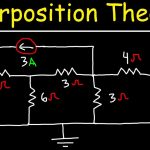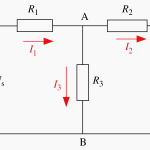There is a wide array of devices used to test and diagnose electronic equipment. This chapter will attempt to explain the differences and different types of equipment used by electronics technicians and engineers.
Ammeter
An ammeter measures current. Current in electronics is usually measured in mA which are called milliamperes, which are 1/1000s of an ampere. .
The ammeter’s terminals must be in series with the current being measured. Ammeters have a small resistance (typically 50 ohms) so that they only have a small effect on the

Basically an ammeter consists of a coil that can rotate inside a magnet, but a spring is trying to push the coil back to zero. The larger the current that flows through the coil, the larger the angle of rotation, the torque (= a rotary force) created by the current being counteracted by the return torque of the spring. .
Usually ammeters are connected in parallel with various switched resistors that can extend the range of currents that can be measured. Assume, for example, that the basic ammeter is ”1000 ohms per volt”, which means that to get the full-scale deflection of the pointer a current of 1 mA is needed (1 volt divided by 1000 ohms is 1 mA – see ”Ohm’s Law”). . To use that ammeter to read 10 mA full-scale it is shunted with another resistance, so that when 10 mA flows, 9 mA will flow through the shunt, and only 1 mA will flow through the meter. Similarly, to extend the range of the ammeter to 100 mA the shunt will carry 99 mA, and the meter only 1 mA.
Ohmmeter
An ohmmeter measures resistance. The two terminals of ohmmeter are each placed on a terminal of the resistance being measured. This resistance should be isolated from other effects. (It should be taken out of a circuit, if it is in one.)
Ohmmeters are basically ammeters that are connected to an internal battery, with a suitable resistance in series . Assume that the basic ammeter is ”1000 ohms per volt”, meaning that 1 mA is needed for full-scale deflection. When the external resistance that is connected to its terminals is zero (the leads are connected together at first for calibration), then the internal, variable, resistor in series with the ammeter is adjusted so that 1 mA will flow; that will depend on the voltage of the battery, and as the battery runs down that setting will change. The full-scale point is marked as zero resistance. If an external resistance is then connected to the terminals that causes only half of the current to flow (0.5 mA in this example), then the external resistance will equal the internal resistance, and the scale is marked accordingly. When no current flows, the scale will read infinity resistance. The scale of an ohmmeter is NOT linear. Ohmmeters are usually useful in checking the short circuit and open circuit in boards.
Voltmeter
A voltmeter measures voltage. The voltmeter’s terminals must be in parallel with the voltage being measured. Voltmeters have a large resistance (typically 1 megaohm), so that they only have a small effect on the voltage.

Multimeter
A multimeter is a combination device, (usually) capable of measuring current, resistance, or voltage. Most modern models measure all three, and include other features such as a diode tester, which can be used to measure continuity in circuits (emitting a loud ’beep’ if there is a short).

Oscilloscope
An oscilloscope, commonly called a ’scope’ by technicians, is used to display a voltage waveform on a screen, usually graphing voltage as a function of time.

Spectrum Analyzer
Spectrum analyzer shows voltage (or power) densities as function of frequency on radio frequency spectrum. Spectrum analyzer can use analogue frequency scanning principle (like radio receiver always changing frequency and measuring receiving amplitude) or digital sampling and FFT (Fast Fourier Transformation).

Logic analyzer
A logic analyzer is, in effect, a specialised oscilloscope. The key difference between an analyzer and an oscilloscope is that the analyzer can only display a digital (on/off) waveform, whereas an oscilloscope can display any voltage (depending on the type of probe connected). The other difference is that logic analysers tend to have many more signal inputs than oscilloscopes – usually 32 or 64, versus the two channels most oscilloscopes provide. Logic analyzers can be very useful for debugging complex logic circuits, where one signal’s state may be affected by many other signals.

Frequency counter
A frequency counter is a relatively simple instrument used to measure the frequency of a signal in Hertz (cycles per second). Most counters work by counting the number of signal cycles that occur in a given time period (usually one second). This count is the frequency of the signal in Hertz, which is displayed on the counter’s display.

Electrometer
A voltmeter with extremely high input resistance capable of measuring electrical charge with minimal influence on that charge. Ubiquitous in nucleonics, physics and bio-medical disciplines. Enables the direct verification of charge measured in coulombs according to Q=CV. Additionally, electrometers can generally measure current flows in the femtoampere range, i.e. .000000000000001 ampere.
Signal Generator



